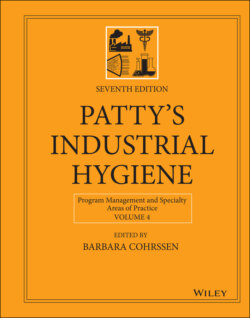Читать книгу Patty's Industrial Hygiene, Program Management and Specialty Areas of Practice - Группа авторов - Страница 19
3.1 ISO and Standards Making
ОглавлениеManagement system standards and guidelines are developed and published by a range of organization types. These include: NGOs, such as ISO; national standards bodies, such as ANSI and BSI; professional organizations, such as the American Chemistry Council (ACC) and the AIHA; and, national regulatory‐bodies, such as OSHA in the United States. The ILO is of course an international organization that is part of the United Nations structure; it has also been active in the OHSMS arena.
The dominant organization in the standards development space has been ISO which was formed in 1926 as the International Federation of the National Standardizing Associations (ISA), and was later renamed ISO following a brief operating gap during WWII.
ISO is a voluntary organization whose members are recognized standard authorities, each representing one country. ISO standards are produced by volunteers who represent the national standards institutes of over 160 member national standards institutes (25). For example, ANSI is the United States representative to ISO. These volunteers participate on technical committees, subcommittees, and working groups each headed by a Secretariat from one of the member organizations. Each of these groups work to produce or update technical guidance in a specific area. Generally, a specific consensus standard is the ultimate work product, such as ISO 9001, 14001, and 45001.
The difference between standards and guidelines is important. The term standard, typically refers to documents that are “shall” based as opposed to “should” which is often used in guidelines. Use of shall, means that the issue at hand is required, versus the use of should that means that the issue at hand is a recommendation or good idea.
Standards rarely have the force of law unless specifically adopted by a regulatory agency or legislative body. Thus, most standards are voluntary until referenced by regulation or judicial process. However, the line between voluntary and required begins to blur as more organizations adopt these standards and begin requiring conformity by their suppliers. For example, few governments require ISO 9001 or ISO 14001 certification but it is almost impossible to be a global supplier without them. Third‐party certification to the standards such as these has become a de facto requirement in many markets.
